Coping Strategies Used by Staff Nurses Working in Emergency and General Wards of SKIMS Hospital: A Comparative Study
2 Nursing, Christian Medical College, Ludhiana, India
3 Emergency Medicine, Pearless Hospital and Research Centre Kolkata, India
Citation: Jan F, et al. Coping Strategies Used by Staff Nurses Working in Emergency and General Wards of SKIMS Hospital; A Comparative Study. Ann Med Health Sci Res. 2017; 7: 106-112
This open-access article is distributed under the terms of the Creative Commons Attribution Non-Commercial License (CC BY-NC) (http://creativecommons.org/licenses/by-nc/4.0/), which permits reuse, distribution and reproduction of the article, provided that the original work is properly cited and the reuse is restricted to noncommercial purposes. For commercial reuse, contact reprints@pulsus.com
Abstract
Nursing is an occupation subject to have high level of stress. Increased workload, growing occupational stress and inability to cope with it, lack of social and professional support are major concerns in nursing. Staff nurses use different coping strategies in different situations. Objectives: The objectives of this study were to identify the coping strategies used by staff nurses and to find its association with selected demographic variables. The study population consisted of 120 staff nurses working in emergency and general wards of SKIMS Hospital Soura Srinagar. A comparative descriptive design was used to conduct the study. Probability simple random sampling technique was used to select samples. Modified Ways of coping questionnaire (WOCQ) was used to identify coping strategies among staff nurses. Results: In Problem focused coping strategies (PFC), Planful problem -solving (M=10.35, SD=3.161 in emergency wards), (M=10.63, SD= in general wards ) Coping strategy was most frequently used by staff nurses whereas less frequently endorsed coping strategy was confronting coping (M=7.70, SD= 3.859 in emergency wards), (M= 6.25 ,SD=3.09 in general wards). Hence no significant difference was found in PFC in both areas as p- value (0.98>0.05). There was Significant difference in EFC as two types of coping strategies which are less endorsed by emergency ward nurses are Accepting responsibility(M=5.20) and escape- avoidance (M=5.12) while only one coping strategies that is accepting responsibility was least used by general ward nurses . There was no significant association between coping strategies with demographic variables of the staff nurses working in general wards. However, in emergency wards there was significant association of demographic variable of working area with emotion- focused coping strategies.
Keywords
Coping strategies; Emergency wards; General wards; Hospital; Staff nurses
Introduction
Coping is defined as investment of own conscious efforts to solve the personal and interpersonal problems to resist stress. Two methods of coping include problem-focused, and emotion focused and each is effective in specific circumstances. When choosing an effective coping strategy, one must take into account the changeability of the stressor and individual’s reaction to the stressor. Problem-focused coping focuses on the changing or modifying the fundamental cause of the stress. This can be an effective method of coping when it is practical, and the stressor is changeable and modifiable. This type of coping focuses on individual’s taking control of the specific relationship between them and the stressor. Emotion-focused coping strategies are effective in the management of unchangeable stressors. These coping mechanisms involve a cognitive reappraisal process that includes self-reflection and taking control over one’s emotions. The effects of coping skills depend on type of stressors, personality and environment. Staff nurses working in emergency and general wads can use different types of coping strategies depending on stressful situations in their working areas. Research on stress indicates that people tend to use a number of different coping approaches rather than just one. [1]
There are different kinds of coping strategies but in this study most common coping strategies included are problem focused and emotion focused coping strategies. In recent years there has been broad discussion on the nature of stressors experienced by members of “high risk” occupations and professions, for instance nursing and emergency workers, whose role is to support others through traumatic scenarios. [2] Recognition is growing that health care professionals, especially staff nurses working in emergency departments are at a risk for experiencing critical incidents. [3] Most people can cope with stress for short periods but chronic stress produces prolonged changes in the physiological state. [4] Effectiveness of coping behaviors depends on the situation in which they are used. Some coping behaviors may work well for some situations but not for others. [5] In general terms, coping is a strategy that helps people to reduce stress and solve problems.4. In an investigation conducted by the National Institute for Occupational Safety and Health in the USA, nurses were found to be one of the occupations that had a higher than expected incidence of stress related health disorders. It was found that job stress brought about hazardous impacts not only on nurse’s health but also their abilities to cope with job demands. This will seriously impair the provision of quality care and the efficacy of health service delivery. [6]
Objectives
• To identify the type of coping strategies used by staff nurses working in emergency and general wards of SKIMS hospital
• To find its association with respective demographic variables
Materials and Methods
The Quantitative approach was used. Comparative descriptive design was chosen in this study. All areas of Emergency wards and general wards were included. The sample chosen for the present study were the staff nurses who were certified as a GNM OR B.Sc (N) OR Post Basic (N) or M.Sc (N) qualification with professional registration and have been working in the emergency and general wards. 120 staff nurses 60 from each area were selected by using Probability simple random sampling technique. Selection of tool was done by using extensive review literature. Modified ways of coping questionnaire was used to collect the data. This scale was used to measure participant’s coping strategies when dealing with stress. Respondents were asked to think of a specific stressful events that occurred in the past week, and respond to items with these events in mind. Responses are arranged in a 4-point Likert scale. Items on the Ways of coping questionnaire consists of 40 items a score ‘0’ is awarded to not used, a score of ‘1’ used sometimes , a score ‘2’ for used most of the time, and a score ‘3’ for used always, for each was given. The scale offers eight empirically derived subscales: Confronting coping, seeking social support, planful problem solving, self-controlling, distancing, positive Re-appraisal, Accepting responsibility and escape/avoidance. Confronting coping, seeking social support, planful problem solving, are related to problem- solving efforts and selfcontrolling, distancing, positive Re-appraisal, Accepting responsibility and escape/avoidance are related to emotionfocused efforts.
Data collection procedure
The nurses were contacted and administered the questionnaires in their respective areas during different shifts.
Findings
Description of sample characteristics
Table 1 revealed that maximum 24 ( 40.0%) of the staff nurses working in the emergency wards belonged to the age group of less than 30year, while as Maximum 28(46.7%) of the staff nurses working in general wards belonged to the age group of 41 to 50 years. In emergency wards majority 43 (71.6%) of the staff nurses were married while as majority 45 (75%) of the staff nurses working in general wards were married [Table 2]. Table 3 shows that maximum 32(53.3%) of the staff nurses working in emergency wards were B.sc. Nursing/ Post basics nursing and 01(1.7%) were M.sc. nursing holders. Whereas 36(60%) of the staff nurses working in general wards were GNM holders and 01(1.6%) were M.sc. nursing holders. Table 4 revealed that more experienced staff nurses were found in general wards. In emergency wards the majority of the sample was from intensive care units (46.70%) while as in general wards the medical wards accounted more than other areas as shown in Table 5, [Figures 1 – 5].
| Age in years | Nurses working in Emergency wards:(n=60) | Nurses working in general wards: (n=60) | P-value | ||
|---|---|---|---|---|---|
| Frequency | Percentage | Frequency | Percentage | ||
| < 30 years | 24 | 40.0 | 14 | 23.3 | 0.069(NS) |
| 31-40 years | 19 | 31.7 | 18 | 30.0 | |
| 41-50 years | 17 | 28.3 | 28 | 46.7 | |
| Total | 60 | 100.0% | 60 | 100.0% | |
χ2cal. = 3.908 with 2 degrees of freedom.
Note: The proportions of observations in different columns of the contingency table do not vary from row to row. The two characteristics that define the contingency table are not significantly related. (P=0.142>0.05)
Table 1: Frequency distribution and percentage of the staff nurses as per the age.
| Marital status | Nurses working in Emergency wards:(n=60) | Nurses working in general wards:(n=60) | P-Value | ||
|---|---|---|---|---|---|
| Frequency | Percentage | Frequency | Percentage | ||
| Married | 43 | 71.7 | 45 | 75.0 | 0.142 (NS) |
| Unmarried | 17 | 28.3 | 12 | 20.0 | |
| Divorced | 0 | 0 | 3 | 5.0 | |
| Total | 60 | 100.0% | 60 | 100.0% | |
χ2cal. = 3.908 with 2 degrees of freedom.
Note: The proportions of observations in different columns of the contingency table do not vary from row to row. The two characteristics that define the contingency table are not significantly related. (P = 0.142> 0.05)
Table 2: Frequency distribution and percentage of the staff nurses as per their marital status.
| Qualification | Nurses working in Emergency wards:(n=60) | Nurses working in general wards:(n=60) | P-Value | ||
|---|---|---|---|---|---|
| Frequency | Percentage | Frequency | Percentage | ||
| GNM | 27 | 45.0 | 36 | 60.0 | 0.252(NS) |
| B.sc. Nursing | 32 | 53.3 | 23 | 38.3 | |
| M.sc. Nursing | 1 | 1.7 | 1 | 1.7 | |
| Total | 60 | 100.0% | 60 | 100.0% | |
Note: The proportions of observations in different columns of the contingency table do not vary from row to row. The two characteristics that define the contingency table are not significantly related. (P = 0.252> 0.05)
Table 3: Frequency distribution and percentage of the staff nurses as per their professional qualification.
| Experience (Years) | Nurses working in Emergency wards:(n=60) | Nurses working in general wards:(n=60) | P-Value | ||
|---|---|---|---|---|---|
| Frequency | Percentage | Frequency | Percentage | ||
| 1-8 | 29 | 48.4 | 21 | 35.0 | 0.085(NS) |
| 8-16 | 11 | 18.3 | 7 | 11.7 | |
| 16-24 | 20 | 33.3 | 32 | 53.3 | |
| Total | 60 | 100.0% | 60 | 100.0% | |
Note: The proportions of observations in different columns of the contingency table do not vary from row to row. The two characteristics that define the contingency table are not significantly related. (P = 0.085> 0.05)
Table 4: Frequency distribution and percentage of the staff nurses as per their working experience.
| Type of ward/unit | Frequency |  percentage |
|---|---|---|
| Emergency Wards | ||
| Accident and emergency wards | 24 | 40.00 |
| Intensive care units | 28 | 46.70 |
| Labour rooms | 6 | 10.00 |
| Emergency OTS | 2 | 3.30 |
| Total | 60 | 100.00 |
| General Wards | ||
| Maternity ward | 7 | 11.70 |
| Theatres(main OT’S) | 9 | 15.00 |
| Surgical wards | 20 | 33.30 |
| Medical wards | 24 | 40.00 |
| Total | 120 | 100.00 |
Table 5: Frequency distribution and percentage of working units.
Description of coping strategies
Mean scores of different coping strategies in emergency wards: Table 6 presents an overview of the mean scores of problem focused (PFC) coping strategies used by staff nurses working in emergency wards, it is clear that coping strategies that are most frequently used are planful problem –solving (M=10.35), whereas less frequently endorsed coping strategies are confronting coping (M=7.70) as shown in Figure 6a.
| Coping strategies (PFC) | N | (Min; Max) | Mean | SD | SEM | |
| Confronting coping | 60 | (0,15) | 7.70 | 3.859 | 0.4982 | |
| Seeking Social support | 60 | (0,15) | 8.58 | 4.135 | 0.5338 | |
| Planful problem solving | 60 | (0,15) | 10.35 | 3.161 | 0.4081 | |
| Repeated Measures Analysis of Variance | ||||||
| Source | SS | Df | MS | F-Ratio | p-Value | |
| Coping Strategies (PFC) | 218.5 | 2 | 109.2 | 10.32 | < 0.001 | |
| Error/Residual | 1249 | 118 | 10.58 | |||
Table 6: Comparison of mean scores of different coping strategies used by staff nurses working in emergency Wards: (PFCGroup).
Table 7 presents an overview of the mean scores of emotionfocused (EFC) coping strategies used by staff nurses working in emergency wards. It is clear that coping strategies that are most frequently used is positive reappraisal (M=12.25) whereas less frequently endorsed coping strategies are accepting responsibilities (M=5.12) and escape –avoidance (M=5.20) as shown in Figure 6b.
| Coping strategies (EFC) | N | (Min; Max) | Mean | SD | SEM |
|---|---|---|---|---|---|
| Distancing | 60 | (2,13) | 7.48 | 2.926 | 0.3777 |
| Self-controlling | 60 | (0,17) | 9.23 | 3.212 | 0.4147 |
| Accepting responsibility | 60 | (0,12) | 5.12 | 2.744 | 0.3542 |
| Escape –avoidance | 60 | (0,15) | 5.20 | 3.225 | 0.4163 |
| Positive Reappraisal | 60 | (5,15) | 12.25 | 2.601 | 0.3558 |
| Repeated Measures Analysis of Variance | |||||
| Source | SS | Df | MS | F-Ratio | p-Value |
| Coping Strategies (EFC) | 2154 | 4 | 538.5 | 71.64 | < 0.001 |
Table 7: Comparison of mean scores of different coping strategies used by staff nurses working in emergency Wards: (EFC Group).
Mean scores of different coping strategies in general wards: Table 8 presents an overview of the mean scores of problem focused (PFC) coping strategies used by staff nurses working in general wards. It reveals that coping strategies that are most frequently used by staff nurses are planful problem –solving (M=10.63), whereas less frequently used coping strategies are confronting coping (M=6.25). Table 9 presents an overview of the mean scores of emotion- focused (EFC) coping strategies used by staff nurses working in general wards. Table 9 reveals that staff nurses seems to be resorting more to “positive reappraisal” (M=12.45) whereas accepting responsibility as a coping strategy seems to be employed the least (M=6.47) [Figure 7].
| Coping strategies (PFC) | N | (Min; Max) | Mean | SD | SEM |
|---|---|---|---|---|---|
| Confronting coping | 60 | (0,14) | 6.25 | 3.09 | 0.3996 |
| Seeking Social support | 60 | (0,15) | 9.72 | 3.85 | 0.4975 |
| Planful problem solving | 60 | (2,15) | 10.63 | 3.55 | 0.4584 |
| Repeated Measures Analysis of Variance | |||||
| Source | SS | Df | MS | F-Ratio | p-Value |
| Coping Strategies (PFC) | 641.4 | 2 | 320.7 | 29.173 | < 0.001 |
| Error/Residual | 1297 | 118 | 10.99 | ||
Table 8: Comparison of mean scores of different coping strategies used by staff nurses working in general wards: (PFC Group).
| Coping strategies (EFC) | N | (Min;Max) | Mean | SD | SEM |
|---|---|---|---|---|---|
| Distancing | 60 | (0,15) | 7.55 | 2.98 | 0.385 |
| Self-controlling | 60 | (4,18) | 9.83 | 3.14 | 0.4049 |
| Accepting responsibility | 60 | (0,12) | 6.47 | 3.19 | 0.4113 |
| Escape –avoidance | 60 | (0,15) | 7.38 | 4.21 | 0.5441 |
| Positive Reappraisal | 60 | (5,15) | 12.45 | 2.67 | 0.3448 |
| Repeated Measures Analysis of Variance | |||||
| Source | SS | Df | MS | F-Ratio | p-Value |
| Coping Strategies (EFC) | 1403 | 4 | 350.8 | 35.83 | < 0.001 |
| Error/Residual | 2310 | 236 | 9.789 | ||
Table 9: Comparison of mean scores of different coping strategies used by staff nurses working in general wards: (EFC Group).
Comparison of mean scores of coping strategies of staff nurses working in emergency and general wards: Table 10 reveals that there is no significant difference of problem focused coping strategies (PFC) used by staff nurses working in emergency and general wards as p- value (0.98>0.05) Figure 8a. whereas p-value of EFC 0.005 < 0.05, hence there is a significant difference in emotion focused coping strategies used by staff nurses working in emergency and general wards as shown in Figure 8b.
| Group Name | N | Mean | SD | Mean Diff. | 95.00% Confidence Interval | Cal.t | df. | p-Value | ||
|---|---|---|---|---|---|---|---|---|---|---|
| Lower Limit | Upper Limit | |||||||||
| PFC | Emergency wards | 60 | 26.63 | 7.9 | 0.033 | - 2.685 | 2.619 | - 0.025 | 118 | 0.98 (NS) |
| General wards | 60 | 26.60 | 6.7 | |||||||
| EFC | Emergency wards | 60 | 39.28 | 8.2 | 4.40 | -7.432 | -1.368 | -2.874 | 118 | 0.005 (Sig.) |
| General wards | 60 | 43.68 | 8.6 | |||||||
*Percent of total Column
**Percent of total raw
Table 10: Comparison of mean scores of coping strategies of staff nurses working in emergency and general wards of skims hospital.
Frequency and percentage distribution of coping strategies scores: Table 11 reveals that mostly used problem focused coping strategies by staff nurses working in general wards were (58.33%), used always (35%)and used sometimes (6.70%), whereas in emergency wards mostly used PFC were (60%),used always (31.67%) and (8.33%) used PFC sometimes.
| Group | Ward Type | Coping Strategies (Scores) | Frequency | Percentage | P-Value |
|---|---|---|---|---|---|
| PFC | Emergency wards | Used always(31-45) Mostly used(16-30) Used sometimes(0-15) |
19 36 5 |
31.67 60.00 5.00 |
0.894 |
| General wards | Used always (31-45) Mostly used(16-30) Used sometimes(0-15) |
21 35 4 |
35.00 58.33 6.70 |
||
| EFC | Emergency wards | Used always(51-75) Mostly used(26-50) Used sometimes(0-25) |
5 53 2 |
8.33 83.33 3.34 |
0.024 |
| General wards | Used always(51-75) Mostly used(26-50) Used sometimes(0-25) |
16 41 3 |
26.66 68.34 5.00 |
(PFC)------ Chi-square = 0.225 with 2 degrees of freedom;  P = 0.894
(EFC)----- Chi-square = 7.494 with 2 degrees of freedom;  P = 0.024
Table 11: Frequency and percentage distribution of coping strategies scores.
Emotion focused coping strategies mostly used by staff nurses working in general wards were (68.34%), (26.66%) used always and (5%) used sometimes, whereas in emergency wards mostly used EFC were (83%), (8.33%) used always and (3.34%) used sometimes.
Association of coping strategies with demographic variables of staff nurses working in emergency wards: Table 12 indicates that the calculated p- value of FPCis (0.185) and for EFC, is (0.759) for age at 0.05 level of significance hence there is no association between the coping strategies and the age.
| Coping strategy | Socio -demographic variables | Used sometimes | Used Often |
Used always | Chi-square | df | P-Value |
|---|---|---|---|---|---|---|---|
| PFC | Age | ||||||
| < 30 years | 3 | 15 | 6 | 6.193 | 4 | 0.185 | |
| 31- 40 years | 2 | 13 | 4 | ||||
| 41- 50 years | 0 | 8 | 9 | ||||
| EFC | < 30 years | 0 | 21 | 2 | 1.873 | 4 | 0.759 |
| 31-40 years | 1 | 18 | 1 | ||||
| 41-50 years | 1 | 14 | 2 | ||||
| PFC | Marital Status | ||||||
| Married | 3 | 26 | 14 | 0.702 | 2 | 0.704 | |
| Unmarried | 2 | 11 | 4 | ||||
| EFC | Married | 2 | 38 | 3 | 1.126 | 2 | 0.570 |
| Unmarried | 0 | 15 | 2 | ||||
| PFC | Professional qualification | ||||||
| GNM | 2 | 13 | 13 | 4.496 | 4 | 0.343 | |
| BSc.(N)/post basic (N) | 3 | 21 | 7 | ||||
| MSc. (N) | 0 | 1 | 0 | ||||
| EFC | GNM | 2 | 24 | 2 | 2.674 | 4 | 0.649 |
| BSc.(N)/post basic (N) | 0 | 29 | 2 | ||||
| MSc. (N) | 0 | 1 | 0 | ||||
| PFC | Working experience (Years) | ||||||
| 1- 8 years | 4 | 18 | 7 | 5.814 | 4 | 0.213 | |
| 8-16 years | 0 | 8 | 3 | ||||
| 16-24 years | 1 | 9 | 10 | ||||
| EFC | 1- 8 years | 1 | 27 | 2 | 0.850 | 4 | 0.932 |
| 8-16 years | 0 | 10 | 1 | ||||
| 16-24 years | 1 | 16 | 2 | ||||
| bPFC | Working area | ||||||
| Accident/ Emergency | 2 | 13 | 9 | 7.251 | 6 | 0.123 | |
| ICCU’s | 2 | 19 | 7 | ||||
| Labour rooms | 0 | 4 | 2 | ||||
| Emergency OT’s | 1 | 0 | 1 | ||||
| EFC | Accident/ Emergency | 1 | 21 | 2 | 17.179 | 6 | 0.002 |
| ICCU’s | 1 | 25 | 2 | ||||
| Labour rooms | 5 | 5 | 1 | ||||
| Emergency OT’s | 0 | 2 | 0 | ||||
Table 12: Association of coping strategies with selected socio-demographic variables of staff nurses working in Emergency wards.
No association was found between marital status, professional qualification and working experience .No association of working area with PFC was found, but there is significant association between the emotion focused coping strategies and working area.
Association of coping strategies demographic variables of staff nurses working in general wards: Table 13 indicates that for PFC and EFC p>0.05 level of significance hence no association was found between the coping strategies and selected demographic variables.
| Coping strategy | Socio -demographic variables | Used sometimes | Used Often |
Used always | Chi-square | df | P-Value |
|---|---|---|---|---|---|---|---|
| PFC | Age | ||||||
| < 30 years | 2 | 7 | 5 | 3.362 | 4 | 0.499 | |
| 31- 40 years | 1 | 13 | 4 | ||||
| 41- 50 years | 1 | 16 | 11 | ||||
| EFC | < 30 years | 1 | 9 | 4 | 0.391 | 4 | 0.983 |
| 31-40 years | 1 | 12 | 5 | ||||
| 41-50 years | 1 | 20 | 7 | ||||
| PFC | Marital status | ||||||
| Married | 3 | 29 | 14 | 1.380 | 4 | 0.848 | |
| Unmarried | 1 | 5 | 5 | ||||
| Divorced | 0 | 2 | 1 | ||||
| EFC | Married | 3 | 32 | 10 | 3.927 | 4 | 0.416 |
| Unmarried | 0 | 8 | 4 | ||||
| Divorced | 0 | 1 | 2 | ||||
| PFC | Professional qualification | ||||||
| GNM | 4 | 20 | 13 | 5.510 | 4 | 0.239 | |
| BSc.(N)/post basic (N) | 0 | 16 | 6 | ||||
| MSc. (N) | 0 | 0 | 1 | ||||
| EFC | GNM | 2 | 24 | 10 | 0.787 | 4 | 0.940 |
| BSc.(N)/post basic (N) | 1 | 17 | 5 | ||||
| MSc. (N) | 0 | 1 | 0 | ||||
| PFC | Working experience (Years) | ||||||
| 1- 8 years | 2 | 13 | 6 | 1.311 | 4 | 0.859 | |
| 8-16 years | 0 | 5 | 3 | ||||
| 16-24 years | 2 | 17 | 12 | ||||
| EFC | 1- 8 years | 2 | 14 | 5 | 2.506 | 4 | 0.644 |
| 8-16 years | 0 | 6 | 1 | ||||
| 16-24 years | 1 | 21 | 10 | ||||
| PFC | Working area | ||||||
| Maternity wards | 2 | 3 | 2 | 7.972 | 6 | 0.093 | |
| Theatres | 0 | 5 | 4 | ||||
| Surgical wards | 1 | 14 | 5 | ||||
| Medical wards | 1 | 13 | 10 | ||||
| EFC | Maternity wards | 0 | 4 | 3 | 2.969 | 6 | 0.563 |
| Theatres | 1 | 7 | 1 | ||||
| Surgical wards | 1 | 13 | 6 | ||||
| Medical wards | 1 | 17 | 6 | ||||
Table 13: Association of coping strategies with selected socio-demographic variables of staff nurses working in General wards.
Discussion
This study suggests that in emergency as well as in general wards Coping strategies that are most frequently used by staff nurses are planful problem–solving whereas less frequently endorsed coping strategies are confronting coping as far as problem focused coping are concerned, but in emotion- focused (EFC) coping strategies there was significant difference that is less frequently endorsed coping strategy were accepting responsibility and escape/avoidance in emergency wards. In general wards only one coping accepting responsibility seems to be employed the least.
Findings of the study are supported by a study conducted by V.V. Makai [7] “to identify the possible causes, frequency of Stress and the coping strategies used by registered nurses working in a hospital” The findings in this study suggest that registered nurses seem to be resorting more to positive appraisal (mean- 1.99, n=76), planful problem-solving (mean=1.82, n=82) and seeking social support (mean=1.47, n=81) strategies. Escape avoidance as a coping strategy seems to be employed the least.
Findings of coping in general wards are supported by a study of Ashker et al. [8] “to identify and describe work-related emotional stressors that impact the well-being of nurses working in haemodialysis units and to identify their coping techniques. Findings revealed that participants most frequently used ways of coping were planful problem solving (M=17.66), followed by self-controlling (M=15.29), positive appraisal (M=14.93), and seeking social support (M=14.49) when dealing with work-related stressors.
Another study supports the findings of emergency wards by a Descriptive study carried out by Gholamzadeh S, et al. [4] “To investigate the sources of job stress and the adopted coping strategies of nurses who were working in an Accident and emergency department.” The most common strategy used by nurses was self-controlling and Positive Reappraisal and the least common strategy was accepting the responsibility. In this study large proportion of nurses used an emotion-focused strategy while Problem-focused approaches were generally less.
A descriptive study conducted by Varghese S. [9] “to assess the level of stress and coping mechanisms among nurses working in intensive care units”. The findings revealed that χ2cal. < Tab. value for all demographic variables hence no association between stress levels with socio-demographic variables.
A descriptive study conducted by Varghese S. [9] “to assess the level of stress and coping mechanisms among nurses working in intensive care units”. The findings revealed that the (p<0.05) for some of the socio demographic variables hence showed association with coping and few variables did not show significant association with coping mechanism.
Nursing Implications
• Fostering planned discussion, debriefing sessions and continued education to improve counseling skills related to bereavement among nurses will be necessary for preventing stress and promoting coping abilities.
• Mastery of working environment demands and sufficient resources and improved communication which will be helpful to resolve the stress and develop coping abilities among staff nurses working in emergency wards/general wards.
• Sound knowledge and clinical assessment skill among Staff nurses will be one of the important factor. Although it may not be possible to decrease the demands of the job some issues could be addressed in the first instance by providing support and improving working conditions and counseling services after stressful events (i.e. debriefing sessions) and stress management training are amongst the approaches suggested throughout the literature as being beneficial in reducing the nurse’s stress.
Conclusion
This study concludes that staff nurses were employing more frequently problem solving, and positive re–aprraisal coping strategy one of the reasons why positive reappraisal may be used more is because this coping strategy has a religious dimension, and nurses who are working in Kashmir utilize more religious coping than to do others. May be spirituality play a major role. In addition, both painful problem solving and positive reappraisal are coping methods that can be enhanced also through increased educational preparation and work experience. The findings of the study suggest that nurses use adoptive coping strategies in dealing with their work stress.
Conflict of Interest
All authors disclose that there was no conflict of interest.
REFERENCES
- Laal M, Aliramaie N. International Journal of Collaborative Research on Internal Medicine & Public Health.2010; 2:168-181.
- Gillespie BM, Kermode S. How do perioperative nurses cope with stress? Contemporary Nurse. 2004; 16: 20-29.
- Boudreaux ED, McCabe P. Emergency Psychiatry: Critical Incident Stress Management: I. Interventions and Effectiveness. Psychiatr Serv. 2000; 51: 1095-1097.
- Gholamzadeh S, Farkhondeh S, Fereshteh DR. Sources of occupational stress and coping strategies among nurses working in Admission and Emergency Department in Hospitals. Iranian Journal of Nursing and Midwifery Research. 2011; 16: 42-47.
- Folkman S, Lazarus RS, Gruen RJ, et al. Appraisal, coping, health status, and psychological symptoms. J Pers Soc Psychol. 1986; 50: 571-579.
- Lee JK. Job stress, coping and health perceptions of Hong Kong primary care nurses. Int J Nurs Pract. 2003; 9: 86-91.
- Makie VV. Stress and coping strategies amongst registered nurses working in tertiary hospitals [M.Sc (N) dissertation]. South Africa: University of western cape; 2006 Available from http:// www.etd.uwc.ac.za/…/etd-gensrv25Nme4
- Ashker VE, Barbara P, Ali S. Work related emotional stressors and coping strategies that affect the wellbeing of nurses working in Hemodialysis Unit. Nephrology Nursing Journal. 2012; 39: 231-236.
- Varghese S. To assess the level of stress and coping mechanisms among nurses working in intensive care units [M.Sc (N) Dissertation]. Belgaum: KLE University Belgaum; 2013.

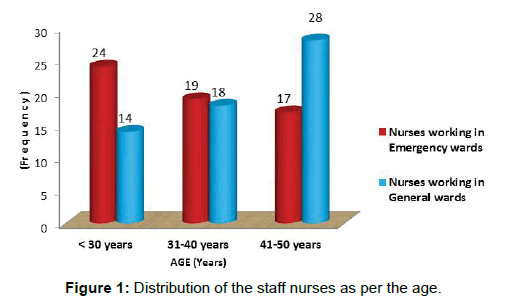
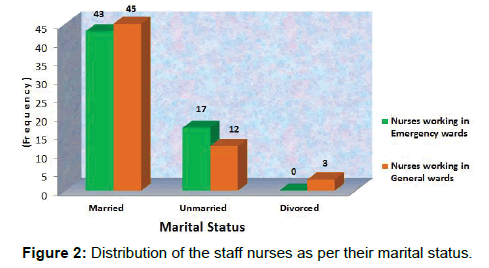
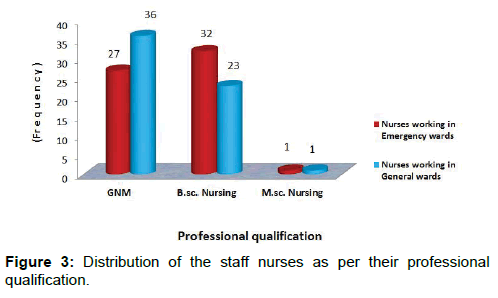
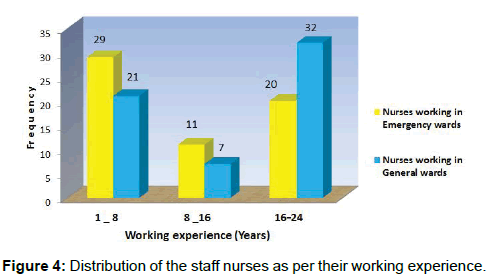
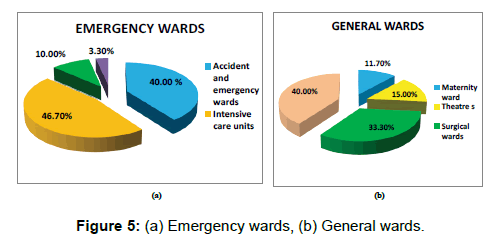
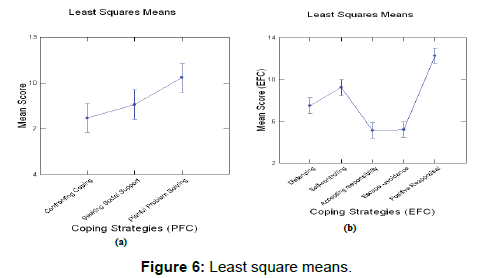
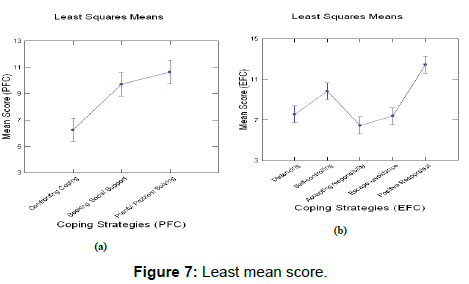
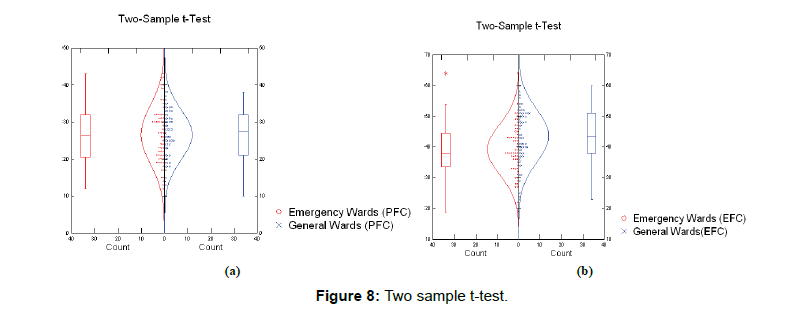



 The Annals of Medical and Health Sciences Research is a monthly multidisciplinary medical journal.
The Annals of Medical and Health Sciences Research is a monthly multidisciplinary medical journal.